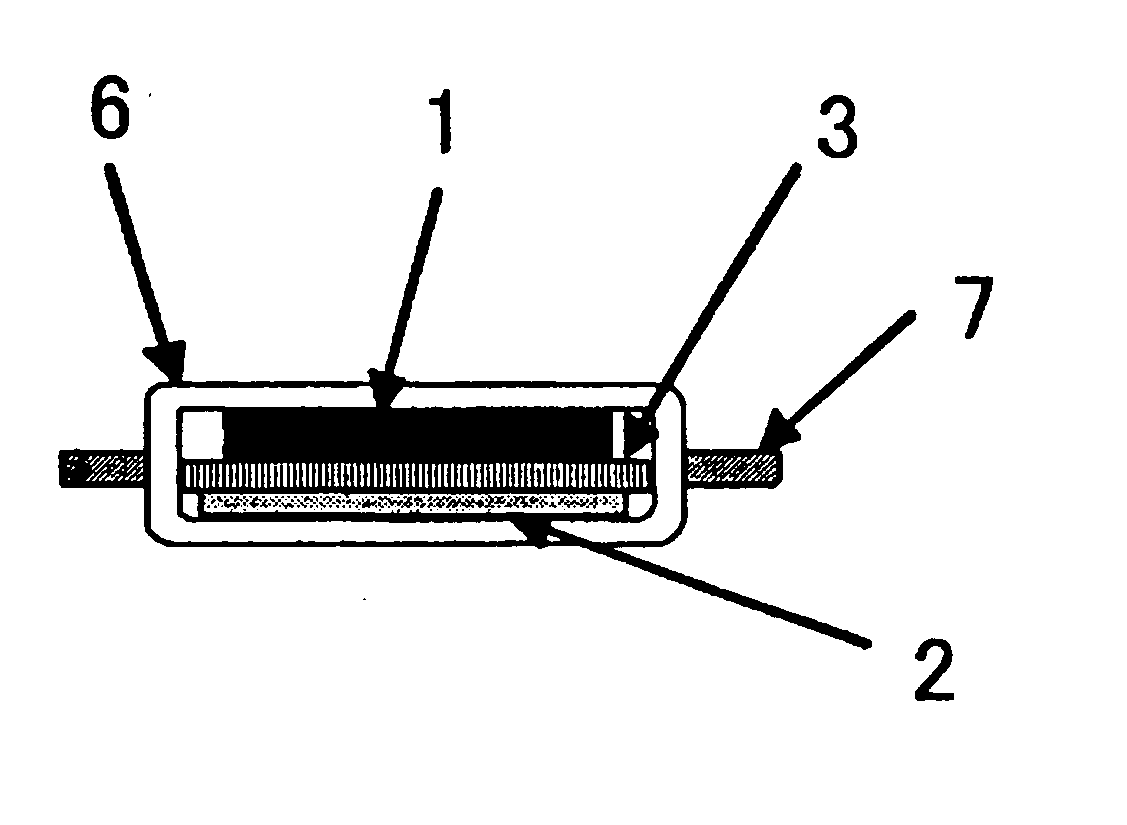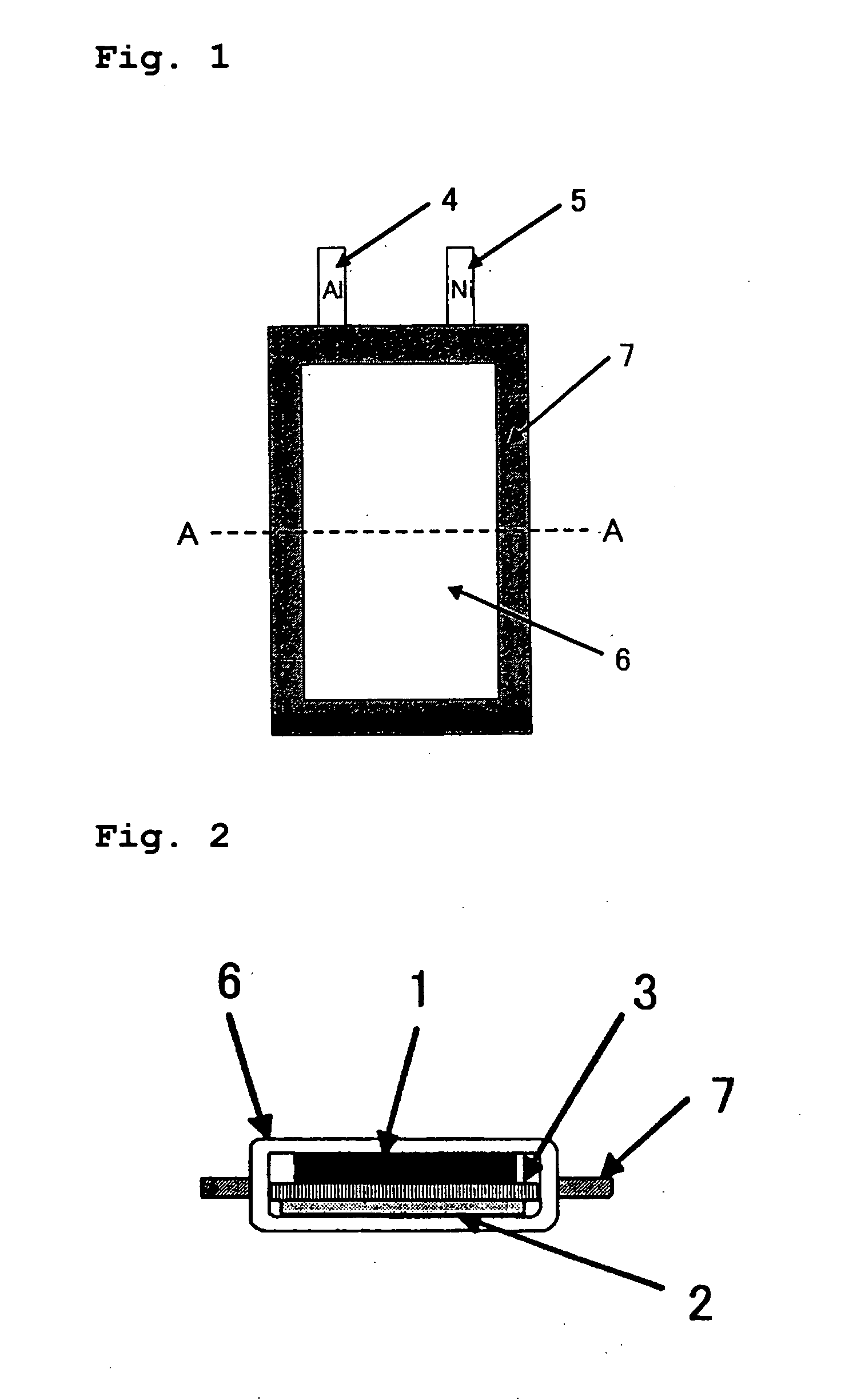Lithium secondary battery
- Summary
- Abstract
- Description
- Claims
- Application Information
AI Technical Summary
Benefits of technology
Problems solved by technology
Method used
Image
Examples
experiment 1
Preparation of Positive Electrode
[0061] LiOH and a coprecipitated hydroxide represented as Ni0.4Mn0.3Co0.3(OH)2 were mixed in a mortar so that the mole ratio of Li to the whole of the transition metals became 1:1. Thereafter, the mixture was sintered at 1000° C. for 20 hours in an air atmosphere and thereafter pulverized, to thus obtain a lithium-transition metal composite oxide represented as LiNi0.4Mn0.3Co0.3O2 and having an average particle size of about 5 μm. The resultant lithium-transition metal composite oxide had a BET specific surface area of 1.01 m2 / g.
[0062] LiMn0.4Ni0.3Co0.3O2 powder as a positive electrode active material, acetylene black as a positive electrode conductive agent, and polyvinylidene fluoride as a positive electrode binder were added to N-methyl-2-pyrrolidone as a dispersion medium so that the weight ratio of the active material, the conductive agent, and the binder became 94:3:3, and the mixture was kneaded to obtain a positive electrode mixture slurry...
experiment 2
[0070] Batteries A2 and B1 were fabricated in the same manner as described in Experiment 1, except that the amounts of the negative electrode mixture on the negative electrode current collectors were set at, 1.74 mg / cm2 and 1.19 mg / cm2, respectively, in preparing the negative electrodes as in Experiment 1.
experiment 3
[0071] In preparing a positive electrode as in Experiment 1, a lithium-transition metal composite oxide represented by the formula Li1.1Ni0.4Mn0.3Co0.3O2 and having an average particle size of about 5 μm was used as the positive electrode active material, which was prepared by mixing the source materials in a mortar so that the mole ratio of Li to the whole of the transition metals became 1.1:1, thereafter sintering the mixture at 1000° C. for 20 hours in an air atmosphere, and then pulverizing the resultant material. Then, Battery A3 was fabricated in the same manner as in Experiment 1, except that the lithium-transition metal composite oxide thus prepared was used, and that the amount of the positive electrode mixture layer on the positive electrode current collector was set at 20.56 mg / cm2. The BET specific surface area of Li1.1Ni0.4Mn0.3Co0.3O2 was 1.06 m2 / g.
PUM
 Login to View More
Login to View More Abstract
Description
Claims
Application Information
 Login to View More
Login to View More - R&D
- Intellectual Property
- Life Sciences
- Materials
- Tech Scout
- Unparalleled Data Quality
- Higher Quality Content
- 60% Fewer Hallucinations
Browse by: Latest US Patents, China's latest patents, Technical Efficacy Thesaurus, Application Domain, Technology Topic, Popular Technical Reports.
© 2025 PatSnap. All rights reserved.Legal|Privacy policy|Modern Slavery Act Transparency Statement|Sitemap|About US| Contact US: help@patsnap.com



